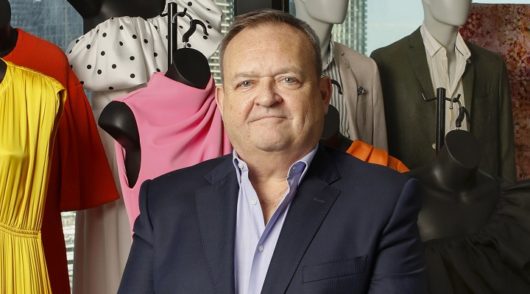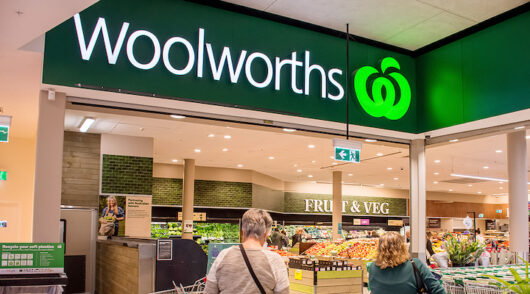For multi-category retailers, matching the accurate information required by teams working across multiple departments – and locations – can be an expensive and risk-ridden challenge. But new-generation software-based technology has developed a solution which not only increases operational efficiencies but can boost a retailer’s bottom line as well.
Woolworths South Africa is a major multi-category retailer dating back to 1931 whose offer spans food, fashion, beauty and homewares. Two years ago, the company adopted the Centric 8 Flagship PLM software solution to manage products across all categories.
In the past, multi-category retailers may have developed different systems for managing products by category, but such is the flexibility of the Centric 8 PLM solution, the company can deploy one software solution that can become a single source of truth for the information about every single unit the retailer sells, regardless of the category. It achieves faster time to market for new products – and more accurate sampling at product design and sourcing stages reduces sample wastage.
PLM is best described as an end-to-end collaborative system that allows multiple people in different departments of a company – along with suppliers and external partners – to seamlessly monitor and manage product initiatives, from the initial idea and design stage all the way through to sourcing, manufacturing and ranging it.
“Multi-category retailers want a system that can streamline different practices but also manage niche differences between types of products,” explains Graham Jones, ANZ Sales Director at Centric Software.
Woolworths says the Centric 8 fits the brief. Moira Alexander, Manager of Improvement Projects at Woolworths, says the retailer has realised a “significant” return on investment since the system was rolled out in terms of time saved, communication and collaboration. It has removed duplication of work, provided cost-efficiencies and resulted in higher profits. On top of that, the project was delivered on time, under budget despite a larger scope than was originally estimated.
Prior to PLM, there were too many complexities in the way products would be attributed, coded and managed at Woolworths. The company’s large supplier base added additional layers of complexity and quality management was not standardised.
On top of this, the business was working using an outdated legacy Product Data Management (PDM) system, resulting in an overreliance on email and Excel, duplication of work and a lack of traceability and standardised business processes. Woolworths needed a digital transformation solution to streamline operations, modernise processes and stay competitive in the challenging retail landscape.
“The question of finding the right PLM is what took a bit of time… we had to make sure that we could find the right system to be able to cater to all of the complexities and nuances across our product mix,” shares Alexander. “We’re a big ship, we don’t turn very quickly.”
Woolworths selected Centric PLM for a variety of reasons including Centric Software’s expertise in fashion and retail, impressive customer endorsements and high satisfaction rates as well as the opportunity for truly localised project support.
“From the beginning, we didn’t just put in a PLM system, we re-examined how we worked and identified gaps and opportunities, trying to understand how we could make the systems and the processes work better,” says Alexander.
Silicon Valley-headquartered Centric Software, a subsidiary of French 3D-design software giant Dassault Systèmes, provides a digital transformation platform that monitors products from concept to consumer sale across fashion, retail, footwear, luxury, outdoor and consumer goods including cosmetics and personal care and food and beverage.
A core advantage of the Centric PLM solution for multi-category retailers like Woolworths is that it can handle complex and broad differences within categories like apparel.
“In cosmetics, it’s all about raw materials, certifications, in the case of homewares specifications, attributes, packaging for a set of dinner plates has to be able to handle 15kg – it’s all about measurements and colours,” explains Jones. “Even though the concept is the same when you get into different categories, the way you need to manage them and the way they work is quite different.
“Shoes are quite complex, and lingerie is even more complex, for example,” says Jones. So, if someone says their PLM system handles apparel, but not footwear, then that’s a problem for a multi-category retailer because the complexities are very different and you need to make sure your PLM solution can manage all the different types of items you sell even within a category.
“A large multi-category retailer in the past would have a separate sourcing system, but not linked up to the design and not linked up to the rest of the business. If you’ve got an end-to-end solution, you are getting an accurate picture of your situation, from design to production, including the sourcing. So Centric has modules all along the way.”
Confirming sustainability compliance
Robust PLM systems are delivering significant impact in helping companies strengthen and prove their sustainability credentials, says Jones.
Woolworths South Africa is a great example of this.
“A lot of the middle to upper-tier brands are getting very focused on sustainability and they are finding holes in their system, so they can’t really prove the sustainability,” says Jones.
They might be able to check the cotton used in a garment has been sourced from an ethical, reputable supplier, and know the water usage for that cotton, perhaps – but can they offer consumers a provable headline figure, like ‘30 per cent of our cotton is produced with low water use’?
“Often they can’t because they just do not have that one source of truth, they do not have the ability within the organisation to extract that information and know it’s true.”
That means they might find it challenging to prove to independent, third-party sustainability certifying organisations that their products comply, even if they have obtained the correct information from various points along the supply chain.
“A big part of our work with Woolworths is to ensure they have the systems in place to be able to prove these claims. Using our PLM they can now trace products right back to the raw material level.”
Sourcing is a core area where an efficient PLM solution can make a huge amount of difference to a multi-category retailer.
When a retailer like Woolworths sets out to source an own-label hard-good product it will usually create a specification. The company will likely send that to three different factories that have already been onboarded to the company’s internal system, with necessary certification and compliance credentials confirmed, including the fairness of treating suppliers or proving employees are paid a living wage, for example.
“Our system manages all those questionnaires in ensuring that they pass that. Then when you give them the specification for a new product – whether it be a clothing item or hard goods or whatever – they would upload their quotations and that’s where you can also put the sustainable design when you’re rating raw materials. When those suppliers put those quotes into the system, then you can make decisions like Okay, this one might be a little bit higher, but it also doesn’t use as many sea miles in order to get it to Australia, so I can offset the cost of the sustainability component as well.
“So sustainability is creeping into that whole sourcing area as well. You can’t just divorce them along the path. If you are designing a garment that is really using recycled materials, that’s all good, but how can you prove it?”
The lack of a complex PLM system can leave brands exposed to regulatory breaches if there is no robust connection between different teams in the sourcing, ordering, labelling and merchandising processes of a product’s life.
“If you’ve got shoddy compliance controls, then you may state something like vegan on a label and that’s not true, then you get busted.”
One company Jones knows of had an issue with a product it sourced from abroad where the manufacturer changed the formulation to make it more effective. The change meant the product was no longer considered ‘vegan’ – but the staff responsible for labelling was unaware of the change and while the packaging showed the updated ingredient, it still also included a vegan claim on the label. A sharp-eyed consumer cried foul and the company found itself in a regulatory breach.
“That’s very damaging to a brand,” says Jones. “It arose because there was no link between the formulation and the packaging within the retailer. With our system, if someone changed the formulation, that information would flow through to the labelling team. That’s the advantage of PLM: everything’s linked in what we call a single source of truth.”
In this example, a vendor using a PLM system can see their formulations, packaging, sourcing of raw materials in one place. If something changed, the system would create an alert highlighting any impact on another part of the business.
As Jones stresses a strong PLM system can not only achieve enormous efficiencies of scale and reduce costs within a business, it can prevent unintentional and costly business compliance errors as well.
If you’d like to learn more about Centric’s PLM system and how it impacted Woolworths South Africa’s business, take a look at the case study here.






